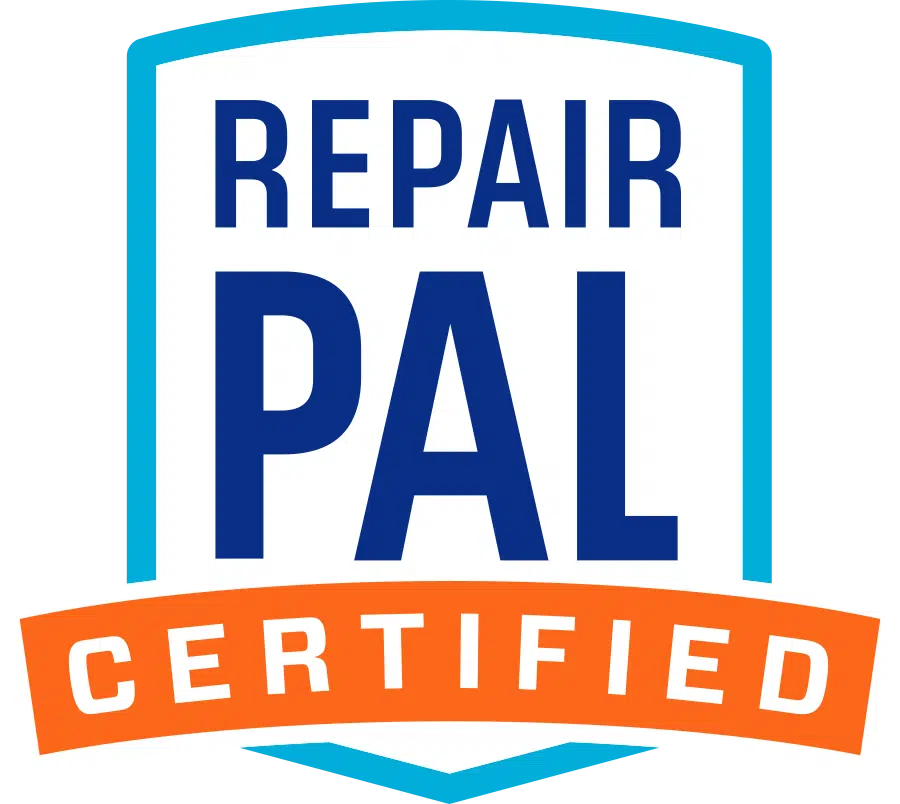What Does Code P0440 Mean?
- P0440 definition: Evaporative Emission Control System Malfunction
- Issue Severity: LOW – Continued driving for a short period of time is okay
- Repair Urgency: Get this fixed within the next month to prevent poor emissions and potential emission system damage.
- Diagnosis: Code P0440 will not cause any noticeable driving issues but will result in a failed emissions test. However, as with all check engine light diagnostic trouble codes, you should repair it as soon as possible to return the vehicle to normal operation.
The evaporative emission control (EVAP) system prevents fuel vapors from escaping into the atmosphere. When the vent control valve is open, the fuel vapors from the fuel tank travel through a vent line to the charcoal canister. The fuel vapors are then absorbed and stored by activated charcoal pellets in the charcoal canister. The purge volume control valve controls how much fuel vapor is allowed into the engine. When it is opened (it is normally closed), the vacuum from the engine draws the fuel vapors out of the charcoal canister and into the engine intake manifold, where it is then used as part of the air-fuel mixture needed for combustion within the cylinders of the engine. Vehicle fuel tanks have been sealed in this way since the 1990s to reduce the amount of fuel evaporating into the atmosphere.
When code P0440 is set, a leak has been detected by the Engine Control Module (ECM), or a vapor pressure sensor has malfunctioned. The ECM determines this when the vehicle is turned off, and the vent control valve is commanded closed. At this point, the ECM monitors EVAP system pressure, and if it doesn’t maintain pressure, it will trigger the Check Engine Light.
P0440 Causes
There are many potential causes of code P0440.
- Missing, defective, damaged, or loose gas cap (*Most Common)
- Leaking or disconnected EVAP hose
- Faulty purge volume valve
- Faulty canister vent control valve
- Charcoal canister leak
- Leaking fuel tank
P0440 Symptoms
- Check Engine Light
- Fuel vapor odor
How Do I Fix Code P0440?
With an EVAP fault, the first step is to get it diagnosed to figure out what is causing the problem.
If your vehicle has this fault and you’re not comfortable diagnosing this issue at home, we recommend finding a RepairPal certified shop nearby to pinpoint the problem and give an accurate estimate for repairs.
These shops can not only help you figure out what’s going wrong before you waste time and money on the wrong parts, but they also offer a minimum 12-month, 12,000-mile warranty and stand behind all their estimates with guaranteed fair pricing.
> Find a RepairPal Certified Shop Near You
How Much Does It Cost to Fix Code P0440?
P0440 can be caused by anything from a loose gas cap to a damaged hose to a leaking fuel tank. It’s impossible to give an accurate estimate without properly diagnosing the issue first.
If you take your car to a shop for diagnosis, most shops will start with an hour of “diag time” (the time spent in labor diagnosing your specific issue). Depending on the shop’s labor rate, this typically costs somewhere between $75-$150. Many, if not most, shops will apply this diagnosis fee to any required repairs if you have them perform the repairs for you. From there, a shop will be able to give you an accurate estimate for repairs to fix your P0440 code.
Possible Repair Costs for P0440
For error code P0440, one or more of the below repairs may be needed to solve the underlying issue. For each possible repair, the estimated cost of repair includes the cost of the relevant parts and the cost of labor required to make the repair.
- Gas Cap $20-$60
- EVAP Line $20-$100
- EVAP Vent Control Valve $150-$200
- Purge Volume Control Valve $150-$200
DIY Steps to Diagnose Code P0440
Engine code P0440 could be caused by a number of things, including a loose gas cap, a damaged hose, or a leaking fuel tank. If you’d like to try to fix code P0440 at home without throwing money at parts, you’ll want to follow the steps below for proper diagnosis. Keep in mind this is an intermediate-level diagnosis and repair and not recommended for beginners. Diagnosis requires more specialized equipment beyond what the FIXD Sensor can provide and it can be a time and labor-intensive process for inexperienced DIYers.
DIY difficulty level: Intermediate
This repair requires mechanical knowledge and is not recommended for beginners.
Tools/parts needed (our top picks from Amazon):
- FIXD
- Basic hand tools
- Vacuum gauge (optional)
- EVAP smoke machine leak checker
- Fused jumper wires
- Vehicle specific service manual
STEP 1: CHECK THE GAS CAP.
Inspect your gas cap to see if it is loose or damaged. If your gas cap is loose, tighten it and clear the code using FIXD. Inspect your gas cap for physical damage or deterioration. However, it should be noted that damage to the gas cap or deterioration of its components is not always visible. If your gas cap was not loose and you do not see any indications of failure, try replacing the gas cap anyway and clearing the codes. Gas caps are relatively inexpensive and are often the fix for code P0440.
STEP 2: RUN A SMOKE TEST.
If replacing the fuel cap didn’t fix it, perform an EVAP system leak check. Pinch off the vent tube to the EVAP Vent Control Valve. Pressurize the EVAP system with an EVAP smoke machine leak checker. Check to see if you see any smoke leaking out from any hoses or seals. Repair any leaks, clear the check engine light, and check to see if the problem is resolved.
STEP 3: CHECK PURGE VOLUME CONTROL VALVE.
If the code returns, test the Purge Volume Control Valve for a Stuck Open condition. With the key and engine off, remove the hose going to the Purge Volume Control Valve coming from the fuel tank and unplug the electrical connector to the valve. Performing this test may set another code. If it does, clear the code and disregard it until after the test is completed and the vehicle is put back together.
The EVAP purge volume control valve is usually located on or near the intake manifold.
Start the engine and use either a vacuum gauge or your finger to see if the vacuum is coming out of the Purge Volume Control Valve where you removed the hose. If there is a vacuum, then the Purge Volume Control Valve is leaking and needs to be replaced. If there is no vacuum, you could still have an intermittent failure of the Purge Volume Control Valve or another EVAP system issue. Continue the diagnosis in the next step.
STEP 4: CHECK EVAP VENT CONTROL VALVE.
If the purge valve passes the test, check the EVAP vent control valve for proper operation. This valve can get sticky, have debris caught in it, or the internal solenoid can fail and not operate.
Remove the EVAP vent control valve from the vehicle. This is usually located under the car in the rear of the vehicle by or attached to the charcoal canister. Verify with no power or ground supplied that you can blow through the valve’s openings. If you can’t blow through the openings, the valve is stuck closed and needs to be replaced.
Supply power and ground to the solenoid. (Refer to your service manual for your vehicle to find out which pins to supply power and ground to.) The valve should click, and now you shouldn’t be able to blow through the openings. If you can blow through the valve when it is powered on, then the valve is faulty and needs to be replaced.
If the code returns, you will need further diagnostics by a mechanic. More diagnostic steps could require electrical testing of the purge and vent control valves for proper operation.
Common P0440 Diagnosis Mistakes
Many people fail to perform a smoke test before or after replacing the fuel cap and jump straight to component replacement. The problem could be as simple as a loose or cracked EVAP hose.
Still Need Help Fixing Code P0440?
If you’ve followed the steps above and are still experiencing check engine code P0440, please contact the FIXD Mechanic Hotline if you’re a FIXD Premium subscriber or find a RepairPal certified shop near you to get the right repairs at a fair price.
Popular Engine Codes p0420 code p0172 code p00171 code p0128 code p0300 code p0456 code p0430 code p0442 code p0455 code p0113 code
Fixed It But The Check Engine Light Is Still On?
Check engine light sometimes need to be reset manually, check out our article:
How to Reset Your Check Engine Light | 4 Ways To Clear It (With or Without a Scanner)

Recovering autocross and track day enthusiast. Once turned a VW Jetta into a pickup truck. Lives in a van down by the river. Dream car: 2001 Subaru WRC rally car.















